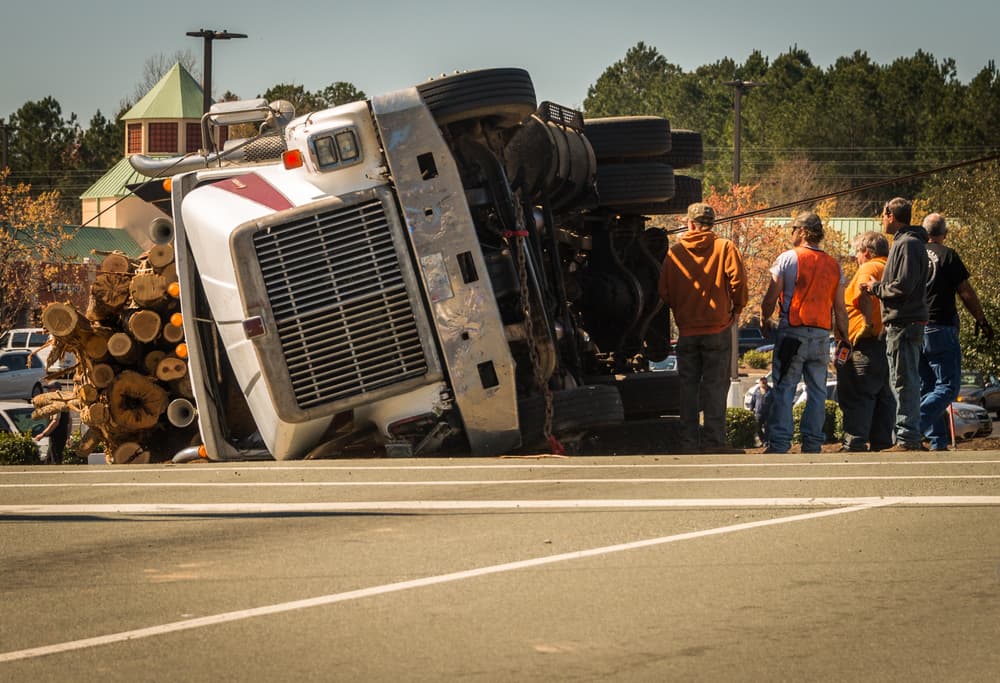Truck Troubles: Common Types of Truck Accidents

Miles of open road crisscrosses. From the bustling highways near Austin to the historic routes around San Antonio and the winding interstates near Waco, routes connect cities, towns, and the people who call this vast state home. These roads, etched with stories of commerce, adventure, and the daily commute, also harbor the potential for catastrophic truck accidents.
Truck accidents are unfortunately common. Passenger vehicles must share the road with semi-trucks and trailers, delivery trucks, vans, and other kinds of heavy trucks. Crashes involving commercial trucks are among the most dangerous. If you or a loved one has been injured in a trucking accident, reach out to experienced truck accident attorneys in Austin for assistance. A tractor-trailer can weigh up to 80,000 pounds. The average passenger vehicle is much smaller and lighter. Even a full-size SUV only weighs around 7,000 pounds. These two tangle with catastrophic results.
As you navigate your way through the highways, you need to know the types of truck accidents so you can avoid them.
Rear-End Collisions
Rear-end collisions involving trucks can result from various factors, including the truck driver’s failure to maintain a safe following distance, distracted driving, sudden braking, adverse weather conditions, or road hazards. Due to the size and weight disparity between trucks and smaller vehicles, rear-end collisions with trucks can cause significant damage and injuries to the occupants of the smaller vehicle.
Here are some potential risks and consequences:
- Severe Injuries: Due to the substantial size and weight of heavy trucks, rear-end collisions can result in severe injuries for occupants of the smaller vehicles. Common injuries include whiplash, spinal injuries, and traumatic brain injuries (TBIs). The impact of a rear-end collision with a heavy truck can also lead to crushing injuries, especially if the smaller vehicle is wedged under the truck. This can cause severe damage to the occupants and may result in fatalities.
- Increased Risk of Fatality: The size and weight of heavy trucks make occupants of smaller vehicles more vulnerable to fatal injuries in rear-end collisions. The risk of fatalities is higher in such accidents compared to collisions involving smaller vehicles.
- Underride Accidents: In some cases, rear-end collisions with heavy trucks can result in underride accidents, where a smaller vehicle may slide under the rear of the truck. This type of collision can lead to catastrophic injuries and fatalities.
- Secondary Collisions: The force of a rear-end collision with a heavy truck can propel the smaller vehicle into other lanes or vehicles, causing secondary collisions and increasing the overall impact on the roadway.
- Fire and Hazardous Materials Risk: Heavy trucks often transport goods, including hazardous materials. A rear-end collision can lead to fuel leaks, fires, or the release of dangerous substances, posing additional risks to other motorists and emergency responders.
- Traffic Disruption: Rear-end collisions with heavy trucks can lead to road closures and traffic disruptions, reducing the flow of vehicles on the road and causing delays for emergency services.
Jackknife Accidents

A jackknife accident occurs when the truck’s trailer swings outward, forming an angle with the cab.
This dangerous situation can lead to hazards for other vehicles:
- Collision Risk: The swinging trailer in a jackknife scenario increases the risk of colliding with other vehicles in adjacent lanes or the trailer itself. The trailer can sweep across multiple lanes of traffic, creating a broad path of potential danger.
- Limited Visibility: Jackknifed trucks can obstruct the view of the road for other drivers, making it challenging for them to anticipate and react to the unfolding situation. This limited visibility can lead to secondary collisions as drivers attempt to navigate around the jackknifed truck.
- Blocking Traffic Flow: A jackknifed truck, especially if it spans multiple lanes, can block the flow of traffic. This obstruction can cause congestion and contribute to additional accidents as vehicles attempt to navigate around the blocked area.
- Injury Risk: The force generated by a jackknife accident can result in severe injuries for occupants of both the truck and other involved vehicles.
- Property Damage: Jackknife accidents often result in significant property damage, not only to the involved truck but also to other vehicles caught in the path of the swinging trailer. This can lead to costly repairs and insurance claims.
Blind Spot Incidents
Trucks have larger blind spots than regular vehicles. Always be cautious when passing or merging near a truck. If you can’t see the truck driver in their side mirrors, chances are they can’t see you either. Blind spot collisions with an 18-wheeler or other heavy truck pose significant dangers to other motorists on the road.
Here’s how these collisions happen and the associated risks:
- Limited Visibility: Heavy trucks have substantial blind spots on all sides, including the front, rear, and especially the sides. These blind spots are where the truck driver cannot see other vehicles using mirrors.
- Lane Changes and Merging: Blind spot collisions often occur when other motorists attempt to change lanes or merge into traffic around a heavy truck. If a driver is in the truck’s blind spot, the trucker may not see them.
- Passing Trucks: When passing a heavy truck, motorists may enter the truck’s blind spot. If the trucker cannot see a vehicle in the blind spot and changes lanes, a collision can occur.
- Turning Trucks: Blind spot collisions can also happen when a heavy truck is making a turn, and a vehicle is in the blind spot. The truck driver may not see the vehicle, turn, and collide with them.
Rollover Accidents
When a truck tips over onto its side, it’s a rollover accident. These incidents can happen due to speeding, sharp turns, or uneven roads. A rollover accident also might occur if a truck was incorrectly loaded and the load shifts during travel. Be cautious around trucks, especially on tight curves.
Here’s an overview of the dangers associated with rollover accidents involving heavy trucks:
- Crush Injuries: Rollover accidents can lead to crush injuries for occupants of other vehicles, especially if the truck lands on top of or collides with smaller vehicles.
- Debris Hazards: Rollover accidents can cause debris to scatter across the road, creating hazards for other motorists. Debris may include cargo, parts of the truck, or other materials that can contribute to additional accidents.
- Preventable Nature: Many preventable rollover accidents involving heavy trucks are caused by speeding, improper braking, improperly loaded cargo, or inadequate driver training. Improved safety practices can reduce these accidents.
Wide Turns
Trucks make wide turns, and they may swing into adjacent lanes during the process. If you find yourself near a turning truck, give it ample space to maneuver. Being aware of their turning radius can prevent collisions.
Hazardous situations resulting from wide turns include:
- Lane Encroachment: Trucks making wide turns may encroach into adjacent lanes, creating a risk of collision with vehicles traveling beside or attempting to pass the truck.
- Sideswipe Collisions: The extended length of a truck during a wide turn increases the likelihood of sideswipe collisions with vehicles in adjacent lanes. This can damage both the truck and the other vehicles.
- Crush Injuries: If a smaller vehicle is caught in the path of a turning truck, the potential for crush injuries increases. The sheer size and weight of the truck can damage the smaller vehicle and its occupants.
- Intersection Hazards: Wide turns often occur at intersections, where multiple lanes of traffic converge. This increases the complexity of the maneuver and raises the risk of collisions with vehicles in the intersection.
- Obstructed View: The size of the truck’s trailer can obstruct the driver’s view, making it challenging for the trucker to see vehicles in adjacent lanes during the turn. This limited visibility contributes to the risk of accidents.
- Pedestrian and Cyclist Risk: A trucker making a wide turn may fail to notice pedestrians and cyclists near the intersection or crosswalk. The wide turning radius can place vulnerable road users in danger.
- Driver Error: Mistakes by truck drivers, such as misjudging the turn or failing to signal properly, can contribute to accidents during wide turns.
To ensure your safety as you navigate the Texas roads, stay alert and share this knowledge with others. If you find yourself in a truck accident, seek legal advice.
Remember, you’re not alone – we’re here to guide you through these challenging situations.
Can I File a Personal Injury Claim After a Truck Accident?
Filing a personal injury or wrongful death claim after a truck accident typically involves establishing certain grounds or legal elements.
Here are common grounds for such claims:
- Negligence: If the truck driver or another party in the accident acted negligently, breaching a duty of care owed to others on the road, you may have grounds for a personal injury lawsuit.
- Recklessness: Reckless behavior, such as excessive speeding, aggressive driving, or driving under the influence of drugs or drunk driving, can serve as grounds for a claim.
- Driver Fatigue: If the accident resulted from the truck driver violating hours-of-service regulations or driving while fatigued, it may be a basis for a claim.
- Improper Maintenance: Negligent maintenance of the truck, including issues with brakes, tires, or other essential components, may contribute to accidents and serve as a basis for a claim.
- Defective Equipment: If the accident was caused by a defect in the truck or its components, such as faulty brakes or steering, a product liability claim against the manufacturer may be pursued.
- Violation of Traffic Laws: Any violation of traffic laws, such as running a red light or failure to yield, can be used as evidence to support a personal injury or wrongful death claim.
- Inadequate Training: If the truck driver lacked proper training or certification, leading to the accident, it could give you grounds for a claim against the driver or their employer.
- Overloaded or Improperly Loaded Trucks: Accidents caused by trucks carrying loads that exceed legal weight limits or are improperly balanced may provide grounds for a claim.
- Failure to Inspect: If the trucking company or driver fails to properly inspect the vehicle before the journey, leading to an accident, you may file a claim.
To pursue a personal injury or wrongful death claim successfully, your lawyer will gather evidence, such as accident reports, witness statements, and medical records. Legal professionals can help assess your accident and local and federal laws and regulations to evaluate your claim.
Contact Lorenz & Lorenz Accident & Injury Lawyers PLLC for Your Truck Accident Claim

Ted R. Lorenz, Austin Truck Accident Attorney
Truck accident claims involve complicated state and federal rules that affect liability.
An experienced personal injury lawyer at Lorenz & Lorenz Accident & Injury Lawyers PLLC can guide you through the legal process. Our legal team is experienced in personal injury and traffic accident cases involving heavy trucks in Texas. With offices in Austin, San Antonio, and Waco, we know the local rules and roadways. We can confidently navigate the complexities of the legal process on your behalf. We will help assess liability and work toward securing you the maximum possible compensation for your injuries and losses. Since 2001, our attorneys have been dedicated to helping accident victims. Contact our law office at (512) 477-7333 or fill out our online contact form.
